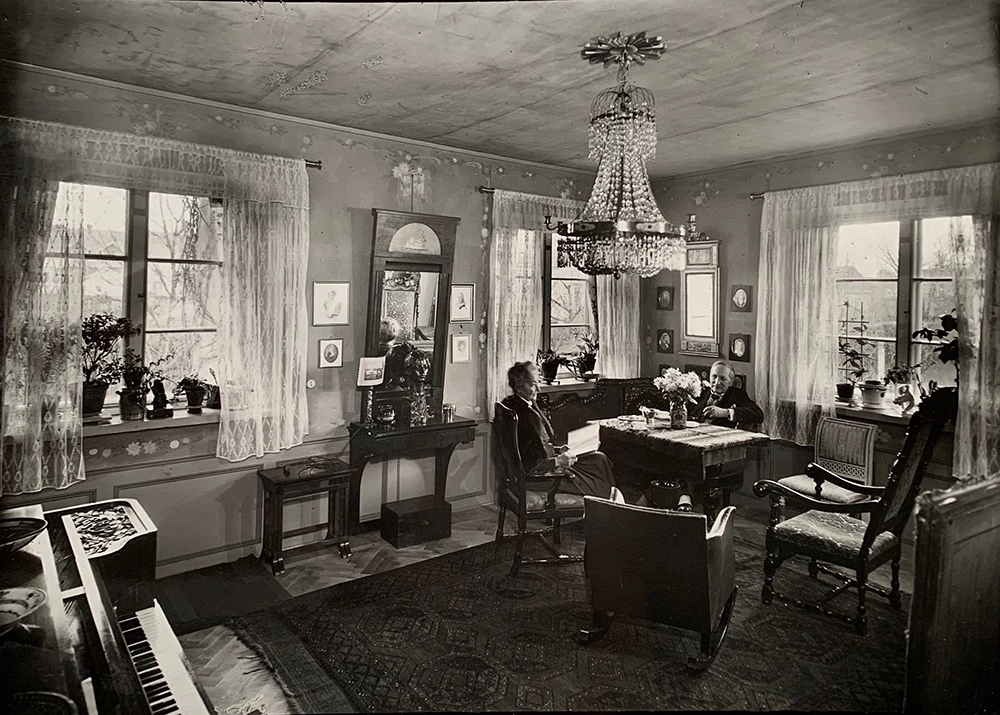
History of Casa Haartman

History of Casa Haartman
Casa Haartman was built in 1925–26 by Axel Haartman (1877–1969) and his wife Hedvig, née Stolpe (1874–1967). The house was designed by architect Erik Bryggman (1891–1955). Axel and Hedvig moved in on 18 September 1926.
A two-storey, plastered brick building with a gable roof, the house represents 1920s Classicism with striking Italian elements, hence its simple, smooth façade, almost severe in appearance. For example, the decorative details are inspired by the ancient world; the house boasts columns and crescent-moon-shaped windows. The façade of the house facing Luostarinkatu is almost windowless, but facing the garden, French windows and large windows open onto a wide terrace. With central heating and running water, Casa Haartman was a modern building from the date it was finished.
If the exterior is typically Bryggmanesque, the interior bears the clear stamp of Axel Haartman himself. The severe façade forms a sharp contrast to the colourful, decorated rooms inside. Haartman painted the ceiling and wall murals upstairs and downstairs and also designed much of the furniture for the house.
Hedvig Haartman was a skilled craftswoman and thus made many of the home’s textiles, including tufted rya rugs and woven rugs. The furniture consists of pieces that the couple inherited or bought in antique shops and at auctions. The Haartmans’ home is filled with art: Axel’s own art and art by friends and colleagues such as Wäinö Aaltonen, Victor Westerholm and Helene Schjerfbeck.
Axel and Hedvig saw Casa Haartman as Axel’s most beautiful work of art, and it was important to them that their home should be preserved. In line with their wishes, in 1970 an association entitled Hedvigs Minne (Hedvig’s memory) was set up and tasked with administering the home and the property. “Hedvig” in the name of the association refers to Axel’s wife but also to his mother and his grandmother, both of whom were called Hedvig.
Hedvigs Minne managed Casa Haartman for almost 50 years, but in 2017 the house and the property were donated to the Åbo Akademi University Foundation. The Foundation also manages two other museums, Ett Hem and the Sibelius Museum, located on Piispankatu in Turku.
Åbo Akademi University Foundation was founded in 1917 by 35 private donors who wanted to found a Swedish-speaking university in Turku. Supporting Åbo Akademi remains the foundation’s fundamental mission, but its role also includes supporting research and Finland-Swedish culture.

